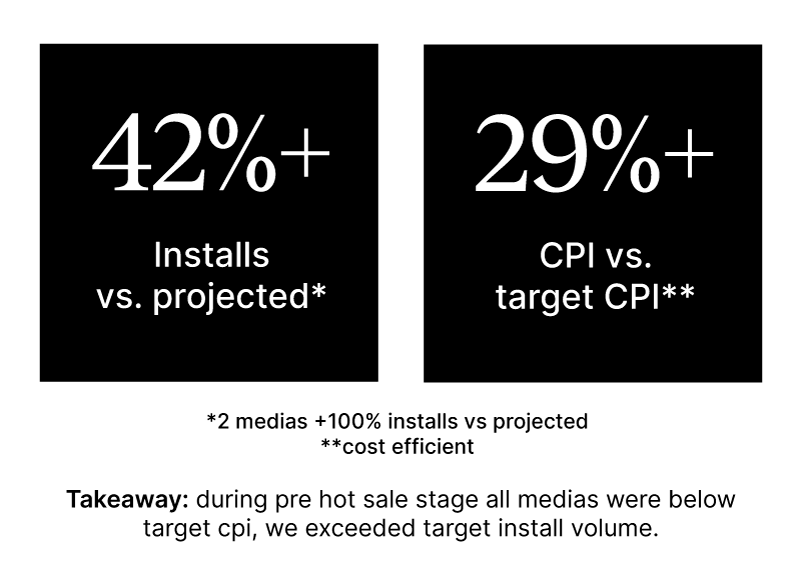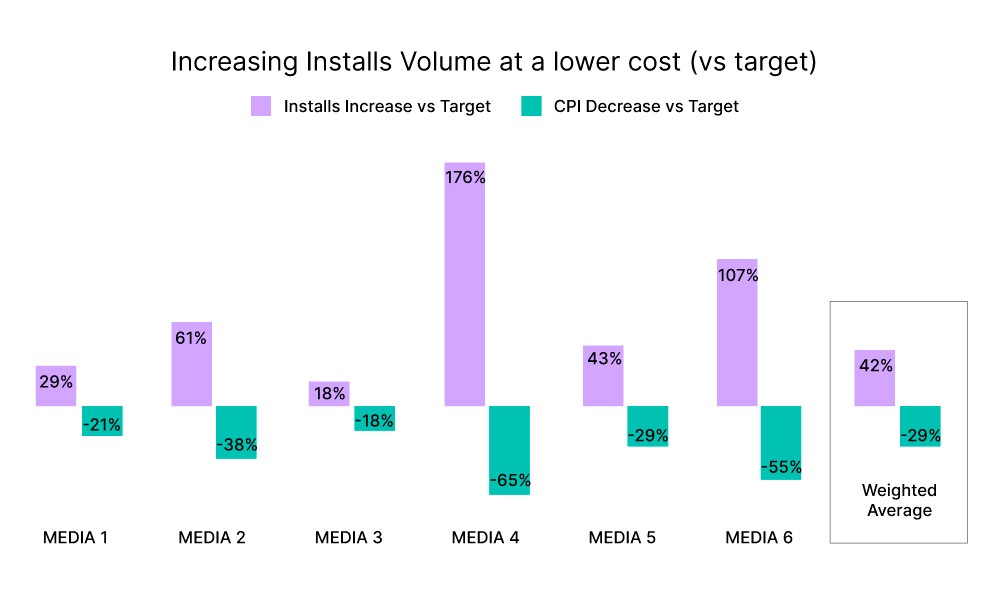Success Stories
Drop it like it’s hot

Anticipating Hot Sale campaigns to drop user acquisition costs
About Coppel
Coppel is a nationwide department store chain and one of the 100 largest companies in Mexico. It has grown rapidly over the years and now has over 1,600 stores in Mexico, and a presence in the United States offering a wide range of products including electronics, furniture, clothing and footwear.
The Challenge
Coppel wanted to expand its digital sales during 2023’s Hot Sale, one of its biggest seasonal events of the year. They needed to plan and execute a strategy to anticipate peak seasonality during May/June 2023 in one of the most anticipated events for retailers in the year.
A 3-Stage Approach
For retailers large-scale online events like “Hot Sale”, “Black Friday” or “Cyber Monday” are huge opportunities to offer promotions and increase sales. These are highly anticipated dates for consumers as usually, as aggressive discounts are usually offered. Hot Sale sales can make up a large portion of a brand’s annual goals.
However, as many retail brands concentrate a great part of their promotional budget around this specific date, competition can get hot too. User acquisition costs tend to increase significantly. To capture high demand while facing contenders, an integral communication strategy is important to deploy before, during, and after a seasonal event.
Pre-Hot Sale: While market-level costs tend to rise, this is the ideal time to start increasing budgets to acquire more users at a relatively low cost.
During Hot Sale: This is the moment when costs skyrocket due to increased competition. It’s the most crucial time in terms of demand, and brands must be present to avoid losing potential users.
Post Hot Sale: Here advertising inventory costs decrease as competition begins to wane, and investment drops. It’s a suitable time to capture users who are not being reached by the rest of the industry.
Investing strategically in these three stages within a seasonality can exceed expectations. Leveraging the low costs during the lead-up and post stages to generate brand visibility and anticipation among users for what the brand has in store during this time can be highly beneficial.
How we tackled it
In a strategic leap, Coppel diversified and scaled its campaigns across multiple paid media channels. Working with Winclap’s Paid Media team activated three new channels, which meant running six platforms simultaneously.
Diversifying paid media means investing in new channels that would find relevant additional users to show the ads to. Thus, adding new channels can bring higher marginal returns on investment (ROI). In simpler terms, it will bring more users for every dollar spent. This makes media buying more efficient.
(To know more about diversifying channels, visit our article)
Seeking Channel Diversification Efficiencies
1. Pre-hot sale:
Coppel surpassed the total projection of installs by 42% and achieved a -29% CPI decrease compared to targets. The focus was on cost efficiency and delivering results.

For every hot sale, shopping brands set high targets. With a diversified acquisition strategy with Programmatic and Social campaigns, Coppel managed to increase installs 42% higher than target and at cost per install 29% lower than planned (weighted averages).

2. Overall: Pre + During + Post Hot Sale:
Coppel achieved a 9.6% More than Projected Installs, with a -9.2% CPI vs. tCPI.
3. ARPU (Average Revenue Per User):
3 Hot Sale Stages: An increase of +24%*
*We assigned each stage’s weight based on our 6 medias’ total revenue/acquired users and compared it to the previous month. We can conclude that a higher ARPU was achieved with a 10% lower CPI. That means higher value users at a lower cost, during a seasonality.
We divided the investment into 6 medias. Some of them got -56% CPI vs target
A Creative Hot Strategy
Coppel and Winclap’s creative strategy for Hot Sale turned up the heat as well. The two companies worked together to create TikTok videos that showcased Coppel’s products in a way that resonated with their target audience. This strategy helped Coppel to become a top performer during the sale.
We used videos showing creators in real life situations related to Hot Sale.
The Results
The Team


